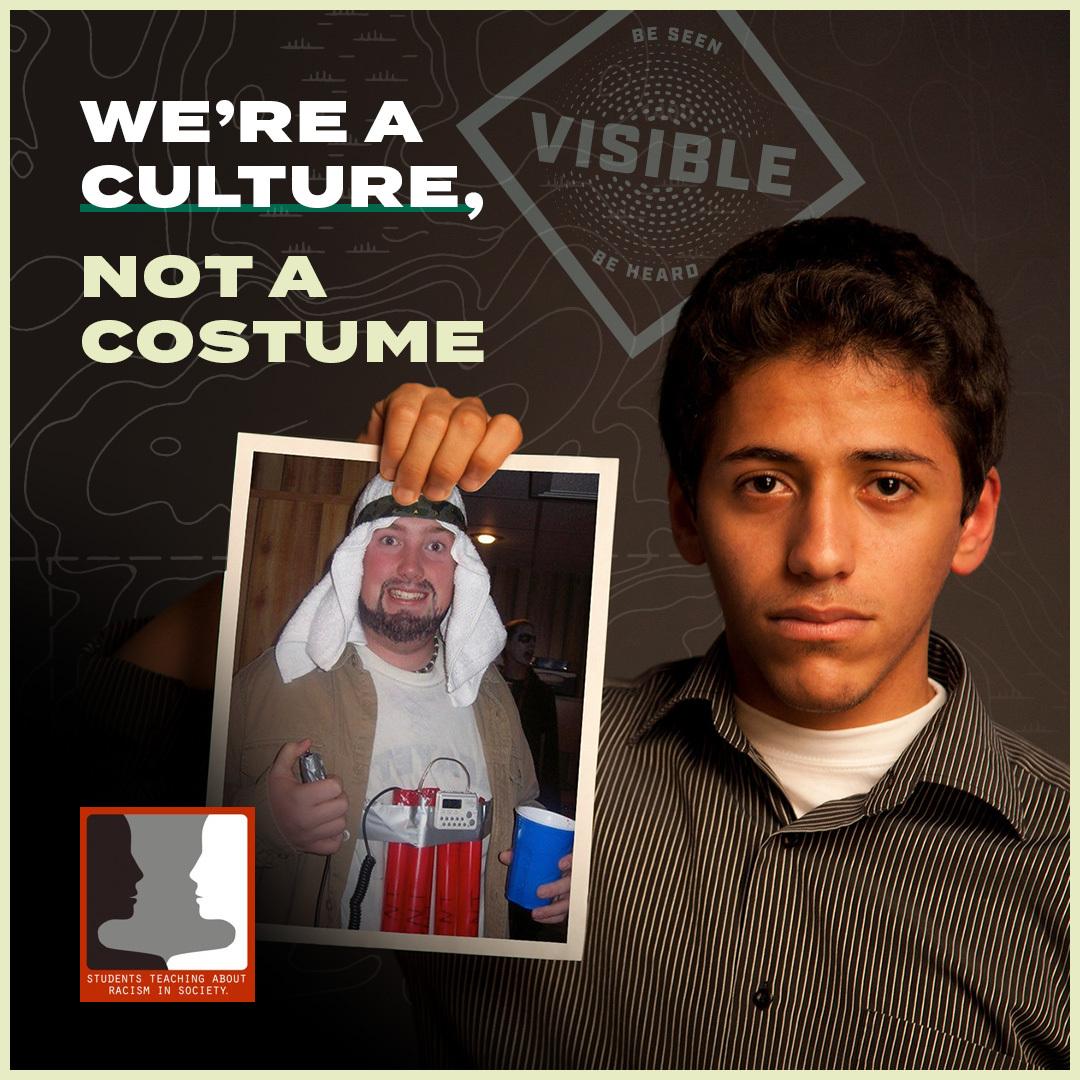
Division of Diversity and Inclusion breathes new life into former student organization’s efforts surrounding cultural appropriation awareness

A newly revitalized campaign led by OHIO’s Division of Diversity and Inclusion (opens in a new window) is working to educate students and encourage the campus community to think twice before wearing costumes that convey cultural appropriation during the Halloween season.
The “My Culture is Not a Costume” campaign aims to inform OHIO students on why they should be wary of appropriating a culture other than their own through a Halloween costume, and why certain costumes should be avoided altogether.
The campaign was originally created in 2011 by a University student organization called STARS (Students Teaching About Racism in Society). The student organization has since disbanded, and OHIO’s Division of Diversity and Inclusion, in partnership with University Communications and Marketing (opens in a new window), worked to breathe new life into the campaign and share its important message with a new generation of Bobcats.
“This campaign is crucial in educating students on the harmful realities of cultural appropriation and creating honest conversations about the impact it can have,” said Executive Director of Diversity and Inclusion Duane Bruce. “Appropriating another culture in any instance does not exhibit the expectations of respect across differences we expect from all Bobcats.”
Cultural appropriation is an important topic around Halloween because certain costumes can be problematic when they are adopting another culture or identity. It is defined as “the adoption, usually without acknowledgment, of cultural identity markers from subcultures or minority communities into mainstream culture by people with a relatively privileged status.”
According to the campaign’s website (opens in a new window), some culturally inappropriate costume ideas include:
- Anything representing blackface, brownface or yellowface
- Costumes that represent harmful racial or ethnic stereotypes
- Making a mockery of mental illness
- Wearing hairstyles of people of color
- Transphobic or homophobic costumes
The campaign states, “Though you may think you are harmlessly dressing up for one night, portraying such stereotypes may do harm and have longstanding impact.” You can read more at this OHIO website (opens in a new window).
"In many cultures, including mine, our clothes, hairstyles, and even the way we carry ourselves, are all a part of our cultural identity,” said Diversity Leadership Ambassador Sheyenne Grainger. “There is meaning behind that identity, and we have it all year round, not just around Halloween. It's not simply something we can try on and take off, so naturally, it's offensive when people that don't share that identity, nor truly appreciate our culture, take that one valuable element and imitate it. Respectfully, that's cultural appropriation.”
Photos produced by the student organization during the campaign’s development were reworked into digital, print and social media graphics by University Communications and Marketing’s digital designer Steven Hollis. Print materials have been distributed on-campus by the Division of Diversity and Inclusion’s Diversity Leadership Ambassadors (opens in a new window), as well as shared to the division’s social media channels (opens in a new window).
"It is important, specifically right now as Halloween is approaching, to raise awareness about cultural appropriation,” said Diversity Leadership Ambassador Re’Aija Grice. “Making jokes about other's ideals and values or what makes them who they are is not comical, nor is it okay.”

